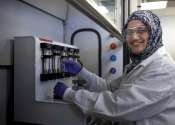From medicine to nanotechnology: How gold quietly shapes our world
The periodic table of chemical elements turns 150 this year. The anniversary is a chance to shine a light on particular elements – some of which seem ubiquitous but which ordinary people beyond the world of chemistry probably ...








